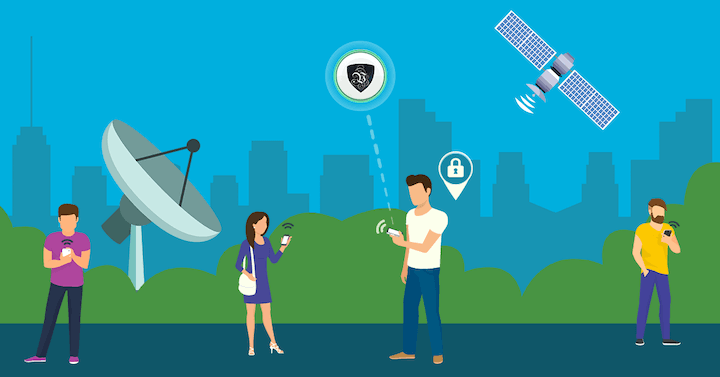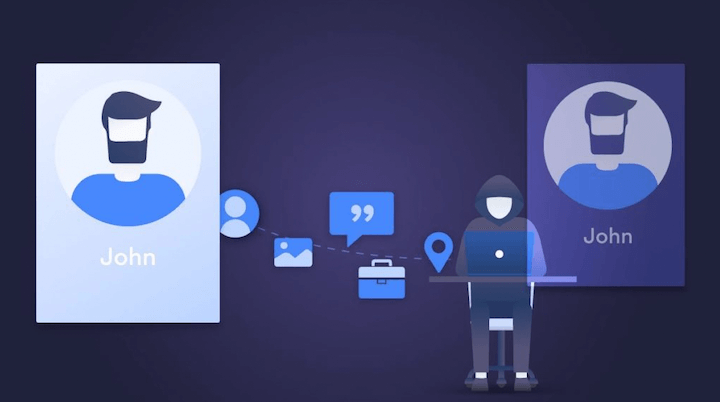Mastering Geo-Spoofing: Your Comprehensive Handbook to Proxy-Based Virtual Relocation

Welcome to the captivating realm of geo-spoofing — a technique that makes digital systems believe you’re accessing the Internet from a location different from your current one. As our world becomes more interconnected, the ability to virtually relocate anywhere has become a powerful tool. Moreover, it has significantly enhanced how we access information and engage with the digital world.
The linchpin behind geo-spoofing is proxies — intermediary servers that provide different IP addresses, effectively masking our actual location. Whether it’s about bypassing geographical content restrictions, protecting online privacy, or conducting market research, mastering geo-spoofing through proxies holds significant potential for individuals and businesses. As we explore this guide, you’ll understand the mechanics of proxies and how to use their power effectively and ethically.
Understanding Proxies
To grasp the concept of geo-spoofing, one must first understand proxies. In its simplest form, a proxy server is an intermediary that facilitates data exchange between your device and the Internet. It serves as a gateway and cloaks your current location by providing a different IP address, making it seem like you’re browsing from another place.
There are different proxies to consider, each with unique strengths and limitations.
- Public Proxies: These are free and accessible to all, but their performance can be unreliable due to heavy traffic. What’s more, they may pose security risks.
- Private Proxies: Private or dedicated services are exclusive to a single user. They offer better performance and security than public proxies but at a cost.
- Shared Proxies: The peculiarity of shared proxies is that multiple users can utilize them simultaneously. Thus, they are less expensive than private services but can be slower due to shared bandwidth.
- Residential Proxies: These are associated with a physical location and provide the highest legitimacy and reliability. One can use them for activities requiring high anonymity levels.
Next, we have proxy protocols, which stand for instructions defining how data is exchanged between devices. The most commonly used protocols are HTTP, HTTPS, and SOCKS. Each serves different purposes, from transmitting web page data (HTTP/HTTPS) to handling different types of traffic, including email, file transfers, and more (SOCKS).
Notably, the role of proxies expands beyond geo-spoofing. They also contribute significantly to Internet security. These servers can provide a protective barrier, preventing hackers and malicious software from accessing your system. Moreover, they can filter web content and control access to certain websites, making them invaluable in corporate and educational settings.
The Mechanics of Geo-Spoofing

As the name suggests, the process involves ‘spoofing’ or tricking a digital system into believing you’re in a different location. This digital illusion of relocation is particularly useful in our increasingly globalized Internet landscape, where access to certain online content is geographically restricted.
How Does Geo-Spoofing Work?
The process centers around the concept of IP addresses. An IP (Internet Protocol) address is a unique string of numbers and/or letters assigned to every device connected to the Internet. It serves two primary purposes: identifying the host or network interface and providing the device’s location.
When you connect to the Internet without a proxy or VPN, your device communicates directly with the server hosting the website or service you’re trying to access. This server sees your IP address and, therefore, your approximate geographical location.
Geo-spoofing alters this dynamic by introducing an intermediary – a proxy or VPN (Virtual Private Network). Instead of connecting directly to the website or service, your device connects to the proxy server or VPN, which then communicates with the website on your behalf.
The critical point is that the server has its IP address transmitted to the website or service you’re accessing. If it locates in a different place than you, it will appear as if you’re browsing from that location — effectively, you’ve spoofed your geo-location.
Use Cases and Applications of Geo-Spoofing
The process has a range of use cases and applications across various domains. Here are some of the most common applications:
- Accessing Region-Restricted Content: One of the most popular uses of geo-spoofing is to access content initially restricted to specific regions. It includes streaming platforms like Netflix, Hulu, or BBC iPlayer that offer different ranges depending on your location.
- Circumventing Censorship: Internet censorship is widespread in some countries. It makes many websites and online services blocked. Geo-spoofing can help users bypass these restrictions and access the information they need.
- Market Research: Businesses use it to research the competition in different regions, conduct regional SEO audits, or understand localized user experiences.
- Testing and Development: Developers and testers use geo-spoofing to simulate how their websites or applications behave in different parts of the world. It can help uncover region-specific bugs or issues.
- Online Gaming: One can use it in the gaming world to access region-locked servers, play games not yet released in the user’s country, or even gain a competitive advantage by reducing lag.
- Privacy and Security: By hiding your IP address, geo-spoofing adds a layer of privacy and can help protect against cyber attacks.
- E-commerce and Online Shopping: Shoppers use it to access region-specific deals or products. Similarly, companies can use it to verify their pricing strategies across different regions.
The Ethics and Legal Aspects of Geo-Spoofing
Navigating the ethics and legalities of geo-spoofing can be complex. While it’s a powerful tool for accessing content, enhancing security, and more, its misuse can lead to breaches of trust and potential legal consequences.
Ethical Aspects
The ethical implications of geo-spoofing hinge on intent and impact. For instance, accessing region-locked content might seem harmless, but it can infringe upon content providers’ licensing agreements with copyright holders. On the other hand, using geo-spoofing to enhance personal security or conduct market research is ethical, assuming it respects privacy and doesn’t involve deceptive practices.
Legal Aspects
From a legal perspective, geo-spoofing exists in a gray area. While tools that change your online location are generally permitted, your ways and purposes for using them can have legal implications.
Thus, geo-spoofing to bypass copyright geo-blocking could get you into legal trouble, especially if it’s done on a large scale or for commercial purposes. Many services have clauses in their terms of service that prohibit such practices, and a violation could lead to account suspension or other penalties.
Certain types of geo-spoofing could also violate laws regarding privacy, data collection, or online conduct, particularly in jurisdictions with stringent regulations like the European Union.
It’s also worth noting that while using proxies and VPNs is legal in most places, some countries have restrictions or outright bans on such tools.
As with any other tool, understanding the potential ethical and legal implications is the key to using geo-spoofing responsibly. Always research and abide by the laws and terms of service applicable to your location and online services. When in doubt, seek legal advice.
Proxies and Geo-Spoofing

Proxies play a pivotal role in enabling geo-spoofing. By acting as an intermediary, they mask your real IP address with one associated with the proxy server, making it seem like you’re accessing the Internet from a different location. Based on the server’s placement, this location could be in another city, country, or even continent.
Step-by-step Guide to Geo-Spoofing with Proxies
Implementing geo-spoofing with proxies can be accomplished in a few simple steps:
Step 1: Choose a Reliable Proxy Provider
Select a reputable proxy service provider that ensures good speed, security, and a wide range of server locations. Remember, investing in a paid service is often worth it as they are more reliable and secure than free ones.
Step 2: Select a Server
After choosing a provider, select a proxy server from your desired geographical location. This server location is where you will appear to be browsing from. Most providers have an easy-to-use interface that lets you choose a server by country or city.
Step 3: Configure
Your Device or Browser Next, configure your device or browser to use the selected proxy. This process will change depending on your device and browser. Most services offer user-friendly apps that let you change your proxy settings with just a few clicks. If you’re setting it up manually, you’ll typically need to input the server address and port number into your device or browser’s network settings.
Step 4: Verify Your New IP Address
After configuring your device or browser, verify that your IP address has changed. You can do this by searching “What’s my IP” in a web browser and checking the location associated with your IP address. If the location matches the location of your chosen proxy server, you’ve successfully set up geo-spoofing.
Step 5: Browse the Web
You’re all set to start browsing the web as you usually would. The websites you visit will perceive your location as the proxy server. Remember, while geo-spoofing can enable you to access region-restricted content, always ensure you respect terms of service and legal guidelines.
Please note that some websites may have advanced security measures to detect traffic from known proxies. If you encounter such an issue, try using a different proxy server. Alternatively, switch to a VPN, which is more effective at masking locations.
Tips for Selecting the Right Proxy for Geo-Spoofing
Choosing the correct server is a crucial step that significantly affects your experience. Here are some tips to guide you:
- Define Your Needs: Your specific requirements will guide your selection. Are you looking to bypass regional restrictions for streaming content? Or do you require a high level of anonymity for sensitive tasks? Understanding your needs will help you choose a suitable proxy.
- Consider Security: Safety is paramount. Prefer the proxies that offer encryption or operate via HTTPS. Avoid free or public services for sensitive tasks as they may pose potential security risks.
- Look for Good Performance: Geo-spoofing can slow down your connection speed due to the data traveling through additional servers. Check for proxies that are known for good speed and performance. It is crucial if you’re using it for streaming or high-bandwidth tasks.
- Check the Geographical Coverage: Ensure the proxy provider has servers in the location you’re interested in. Some providers offer a wide range of placements, while others may have a more limited selection.
- Review Reliability: You don’t want a proxy that drops out at a critical moment, right? So, choose a provider known for stable, reliable service. Check online reviews and consider testing the service before committing to long-term usage.
- Analyze Cost: The price of proxies can vary greatly. While free services may seem appealing, they often have downsides, such as slow speed, unreliable connections, and potential security vulnerabilities. Paid servers typically offer a more reliable and secure service.
- Support for Your Technology: Make sure the proxy service you choose supports your device or browser and is easy to set up and use. Some services offer apps or extensions that simplify the process.
- Customer Service: Good customer service can be a lifesaver if you encounter any issues. Thus, look for a proxy provider that offers robust support.
Remember, no single proxy service will be perfect in all areas, so you must prioritize requirements according to your needs. It’s a good idea to try a few services before settling on the one right for you.
Limitations and Challenges with Proxy-Based Geo-Spoofing

While proxy-based geo-spoofing offers several benefits, there are a few limitations and challenges that you may face:
- Detection by Websites: Some websites and online services have advanced security measures to detect traffic from known proxy servers. If they spot you, these sites may limit or block your access.
- Slower Connection Speeds: Because your Internet traffic is routed through an additional server, your connection speed may decrease. The effect varies depending on the quality of the proxy server and its distance from your actual location.
- Potential Security Risks: You may encounter security concerns, especially with free or public proxies. These servers may not be as secure as you’d like, potentially allowing others to intercept your data. Some malicious actors may even adjust them to steal your information.
- Limited Availability: Not all proxies will have servers in the location you may want to spoof. This limitation can be significant if you choose a less common or rare site.
- Inconsistency and Unreliability: Particularly with free proxies, you may encounter issues such as server downtime or inconsistent performance. Nevertheless, even paid proxies can sometimes face stability issues.
- Legal and Ethical Concerns: While geo-spoofing is legal in many cases, some of its uses may not be. For example, bypassing copyright geoblocking can violate terms of service and may have legal implications. Always ensure you know the rules and laws applicable to your situation.
- Difficulty in Configuration: Setting up a proxy can be complex, especially for those not tech-savvy. While many providers offer apps or extensions to simplify the process, it can still be a hurdle for some users.
Despite some challenges, with the correct proxy provider and a clear understanding of geo-spoofing’s benefits and limitations, you can effectively navigate the digital world from any location you choose.
Conclusion
The realm of geo-spoofing is vast and ever-expanding. By using proxies, you can open the doors to limitless information and access tools for businesses and individuals to navigate the digital world. They serve as the foundation for a new era of Internet usage, where a physical location doesn’t confine the digital experience.
And as we look to the future, we can expect geo-spoofing and proxy technology advancements. Improvements in speed, security, and ease of use are on the horizon, continuing to shape our online interactions. However, with such power comes responsibility. It’s essential always to respect legal boundaries and the terms of service of platforms. With a firm understanding and ethical application of these tools, the Internet world becomes even more open, more accessible, and ultimately more empowering for every user.
